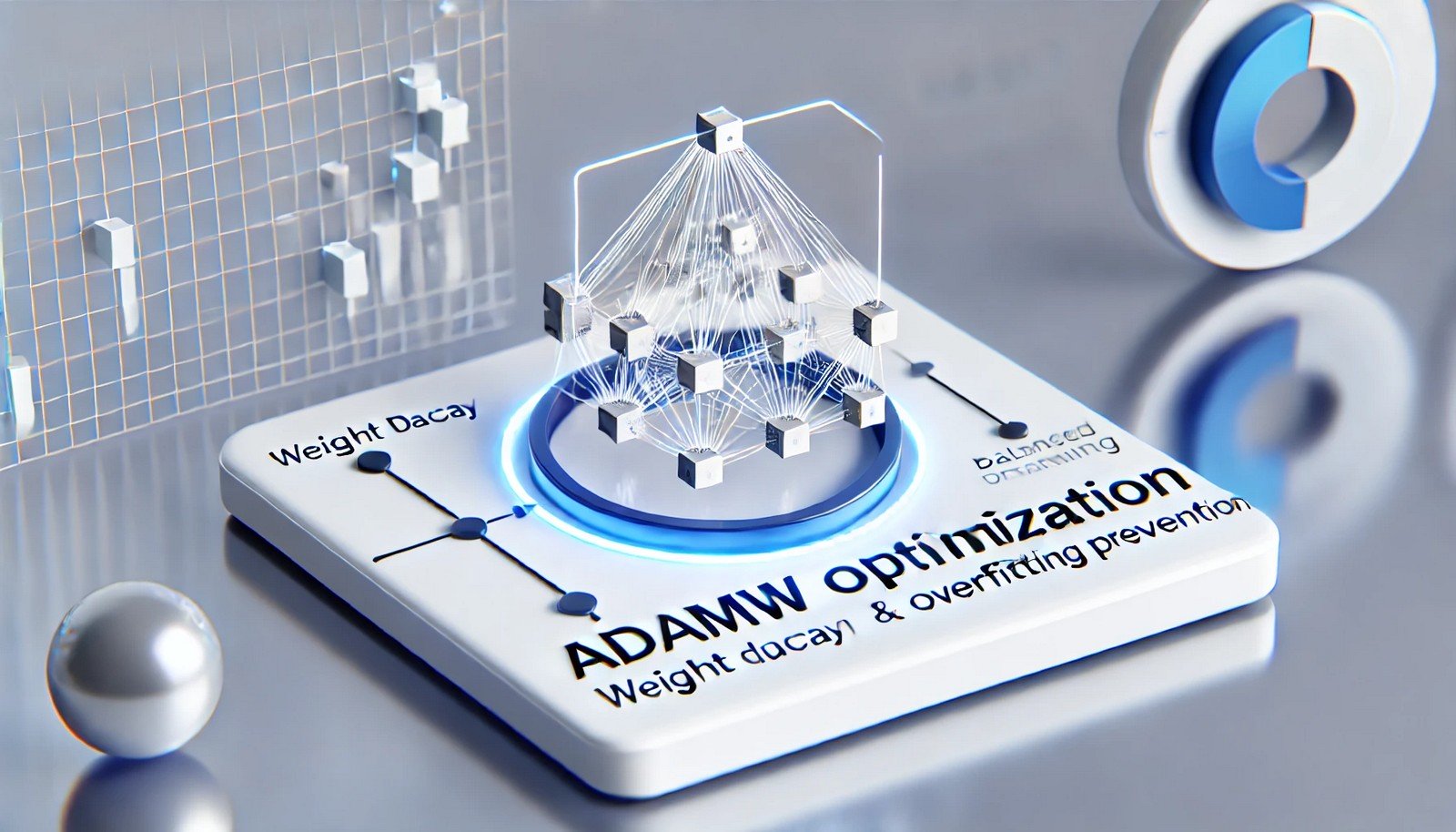AdamW

Quick Navigation:
- AdamW Definition
- AdamW Explained Easy
- AdamW Origin
- AdamW Etymology
- AdamW Usage Trends
- AdamW Usage
- AdamW Examples in Context
- AdamW FAQ
- AdamW Related Words
AdamW Definition
AdamW is an optimization algorithm derived from the Adam optimizer, primarily used in deep learning to adjust model parameters during training. Unlike Adam, which uses L2 regularization, AdamW incorporates weight decay directly into the update rule. This adjustment helps mitigate overfitting and encourages better generalization of the model. The AdamW optimizer is widely applied in training large neural networks due to its adaptive learning rates and effective weight decay mechanism.
AdamW Explained Easy
Imagine training a computer to recognize patterns, like distinguishing cats from dogs in photos. During training, you need to tweak the model so it learns without becoming too rigid or too relaxed in its predictions. AdamW is like a coach that not only helps improve but also ensures the model stays balanced, not clinging too much to past mistakes, which helps it recognize new images accurately.
AdamW Origin
AdamW was introduced as a modification to the Adam optimizer to address issues related to weight decay. Its development arose from research indicating that adding weight decay improves model performance and generalization in neural networks.
AdamW Etymology
The name "AdamW" extends from the original "Adam" optimizer, with "W" representing "weight decay," distinguishing it from the traditional Adam method.
AdamW Usage Trends
The use of AdamW has grown as machine learning practitioners seek optimizers that reduce overfitting and improve model robustness. As models get larger, AdamW’s approach of decoupling weight decay from the learning rate has proven beneficial across various applications, from image processing to natural language processing.
AdamW Usage
- Formal/Technical Tagging:
- Machine Learning
- Neural Networks
- Optimization Algorithms - Typical Collocations:
- "AdamW optimizer"
- "AdamW with weight decay"
- "train neural networks using AdamW"
AdamW Examples in Context
- Researchers applied the AdamW optimizer to train a large language model, resulting in improved accuracy over models trained with Adam alone.
- AdamW is frequently used in training vision transformers, helping maintain model performance across diverse image datasets.
- For speech recognition, AdamW provides a reliable way to fine-tune models without overfitting to specific datasets.
AdamW FAQ
- What is AdamW?
AdamW is an optimization algorithm for training neural networks, incorporating weight decay to improve model generalization. - How is AdamW different from Adam?
Unlike Adam, AdamW includes weight decay directly in the update process, aiding in regularization. - Why is weight decay important in AdamW?
Weight decay helps prevent overfitting, enhancing the model’s ability to generalize to new data. - Can AdamW be used with all types of neural networks?
Yes, AdamW can be used with various neural networks, from convolutional to transformer-based architectures. - How does AdamW improve model training?
By controlling weight decay, AdamW reduces overfitting, leading to models that generalize better. - What are the main applications of AdamW?
AdamW is widely applied in NLP, computer vision, and any deep learning tasks needing robust generalization. - How does AdamW handle learning rates?
AdamW uses adaptive learning rates, which allows it to adjust based on the model's gradient updates. - When should I choose AdamW over Adam?
If overfitting is a concern, or if the model benefits from regularization, AdamW may be more effective than Adam. - Is AdamW computationally intensive?
AdamW is comparable to Adam in computational requirements, as both derive from similar adaptive techniques. - How does AdamW affect large model training?
AdamW’s weight decay decoupling allows for improved training stability in large-scale models.
AdamW Related Words
- Categories/Topics:
- Neural Network Optimization
- Regularization Techniques
- Deep Learning Algorithms
Did you know?
AdamW’s adaptation was a significant breakthrough in deep learning, especially for models like BERT and GPT. Its weight decay feature allows such models to train on extensive datasets without overfitting, improving accuracy and performance in applications from language translation to autonomous vehicles.
PicDictionary.com is an online dictionary in pictures. If you have questions or suggestions, please reach out to us on WhatsApp or Twitter.Authors | Arjun Vishnu | @ArjunAndVishnu

I am Vishnu. I like AI, Linux, Single Board Computers, and Cloud Computing. I create the web & video content, and I also write for popular websites.
My younger brother, Arjun handles image & video editing. Together, we run a YouTube Channel that's focused on reviewing gadgets and explaining technology.



Comments powered by CComment